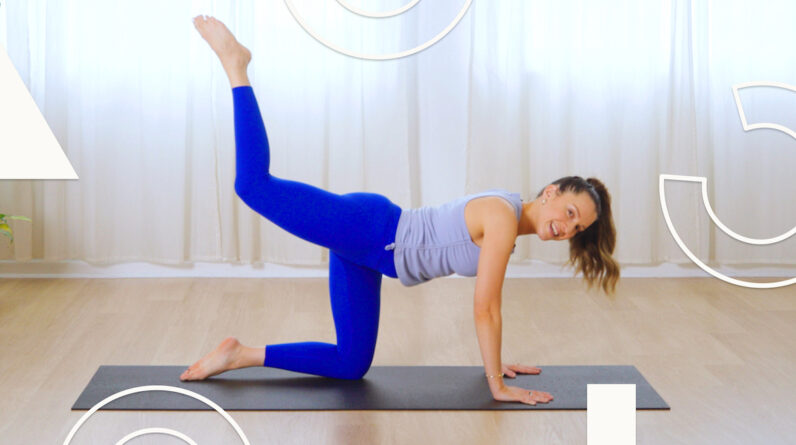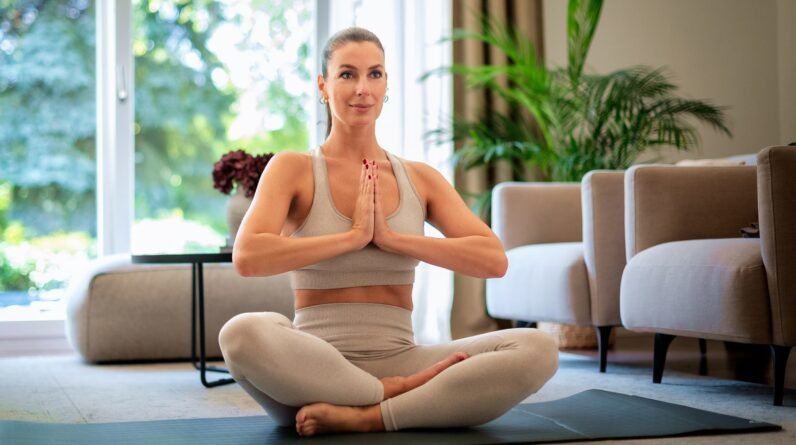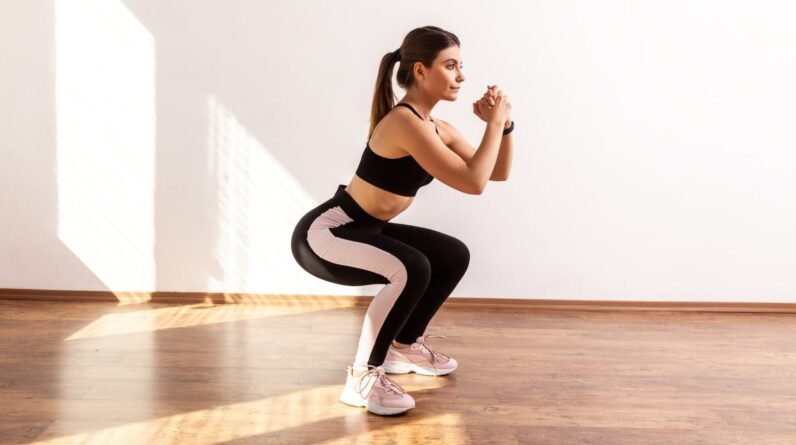
Before there was HIIT, kickboxing, or yoga, there was the original full-body workout: Walking. Our lower body is the most obvious propeller of this action, but actually, most muscle groups get involved.
Let’s break it down from the ground up.
What muscles get used when you’re walking?
First of all, “you are definitely working your leg muscles—your quads, hamstrings, calves, and glutes,” walking coach and ACE-certified trainer Michele Stanten previously told Well+Good. Your hip flexors also help you swing your leg forward, and another lesser known muscle, the anterior tibialis (the muscle that runs along the shin bone), is also a part of the action.
“This muscle is responsible for pulling your toes up,” Stanten says. “So when you swing your leg forward and you land on your heel, your toes are up, and that shin muscle is working. The faster you walk the more steps you’re taking, and the harder it’s working,”
So from the waist down, the fronts, backs, and sides of your legs are all working hard to keep you moving forward. But the waist is not where the effort stops. Your core, including the abdominal muscles, obliques, and spinal stabilizers, are keeping you upright, and preventing you from rocking side to side.
“What those are doing is really supporting your body,” Stanten says. “As you pick up the pace with walking, you start to get some of the hip swivel. So there is a little bit of rotation with walking. So the abdominal muscles are also working in that capacity.”
The lower and middle back muscles that are part of the core also keep you supported. And the upper back in particular activates when you swing your arm muscles, helping with walking momentum.
“If you’re bending your arms, swinging your arms, and driving those elbows back, you really start to work those muscles,” Stanten says. “That nice powerful arm swing can help to power your walk.”
How to build a strong, supported gait
So we know muscle strength is important to power your walks. However, walking alone actually does not necessarily build additional muscle strength, though it does build muscular endurance.
Is there anything you can do, other than walking, to strengthen your gait? Building strength in your body through bodyweight or weighted workouts can help. You could also consider throwing in some strength training to walks themselves by bringing along some hand, wrist, or ankle weights.
“Walking already works your core and entire lower body, but adding in some weights can take things up a notch and work your upper body, as well as spike your heart rate,” Onyx trainer Juliet Root previously told Well+Good.
If you want to set yourself up for all-around walking success, however, strength is not the only component to consider. You also need to mobilize your joints—which involves helping them move through their full range of motion. Strong, mobilized hips in particular “means you’ll be able to walk better on your feet, [and] walk for longer as well,” says Pilates instructor and founder of Go Chlo Pilates, Chloe De Winter.
You also want to stretch all those muscles that you use while walking so that they’re not tight and foreshortened. That’s especially true for the calves, which can bear a lot of the effort of walking, despite being a somewhat ignored muscle.
“[It’s] really important to both strengthen and stretch your calf muscles if you spend a lot of time walking or running,” De Winter says. “Calf muscles get really tight and if they’re too weak, then it can lead to injuries in your feet like plantar fasciitis or shin splints, things like that, which are not fun. So make sure you stretch and strengthen.”
“Calf muscles get really tight and if they’re too weak, then it can lead to injuries in your feet like plantar fasciitis or shin splints.” —Chloe De Winter
De Winter is aware of the full body mechanics necessary for walking, which is why she’s designed a 15-minute Pilates for lower body and core routine for Well+Good’s “Trainer of the Month Club” that’s specifically meant to support your walking practice.
“When you’re out on your feet, you use lots of the muscles in your lower body and also need lots of strength for your core and for your back,” De Winter says. “That’s what we’re going to do today.”
Pilates is a great complement to walking because it can help build slow-twitch muscle fibers, which are the muscles that need to activate when you walk.
Check out the video of De Winter’s Pilates for lower body and core routine above, or you can follow along with a step-by-step guide here.
Pilates for lower body and core routine to support a walking practice
Format: Six lower body strength exercises, done once on each side, followed by three core exercises.
Equipment: No equipment is needed.
Who is this for?: Anybody who wants to support a walking practice by strengthening, stretching, and mobilizing their lower body, core, and back.
Donkey kicks (1 minute)
- Come onto your hands and knees.
- Distribute your weight evenly through your shoulders and your left leg.
- Keeping your right leg bent at the knee, lift it up behind you so that the thigh becomes parallel to the floor.
- Lower back down and repeat.
Fire hydrants (1 minute)
- From hands and knees position, lift the right leg out to the side, keeping the knee bent.
- Lower back down and repeat.
Leg circles (30 seconds)
- From hands and knees, do the first part of a fire hydrant, lifting your right leg out to the side.
- Instead of lowering it back down from the side, rotate the thigh in a circle, so that your foot sweeps up behind you, and then the knee lowers back down.
Lunge pulses (1 minute)
- Stand up into a pyramid pose, with your right foot forward, and your left foot behind with the heel raised off the floor, feet hips-width apart.
- Hinge forward at the hips, moving your chest and shoulders slightly forward.
- Bend both knees as you pulse down and up.
Leg tap backs (50 seconds)
- Bring your left foot up to meet your right foot, maintaining a slight behind in both knees.
- Shift all the weight to your right foot, and place your hands on your hips.
- Straighten the left leg behind you and tap the left foot on the ground.
- Bring it back in, keeping the weight on the right foot.
- Bring in the arms: Bend your elbows at your sides, with your palms facing inward. As your left leg moves back, your left arm moves forward and your right arm moves back, pumping just like they would if you were power walking.
Lifted leg hold (10 seconds)
- From the tapped back position of the leg tap backs, return your hands to your hips.
- Lift your left leg off the ground and hold.
Repeat each of the above moves on the other side
Downward dog to plank (30 seconds)
- Come into a downward dog position: Fold forward from standing. Place your hands on the ground. Walk your feet back until you create a triangle with your body, with your hips at the top of the triangle.
- Come into plank: Shift your weight forward, un-hinging your hips and bringing your body into a straight line.
- Move back and forth between the two positions
Downward dog knee drives (40 seconds)
- Continuing to alternate between downward dog and plank, the next time you shift into a plank, lift one leg off the floor and bend that knee in towards the chest.
- Alternate legs and repeat.
Calf stretch (40 seconds)
- From downward dog, lower one heel down towards the floor as you bend the knee of the opposite leg.
- Hold for 20 seconds.
- Switch sides.







